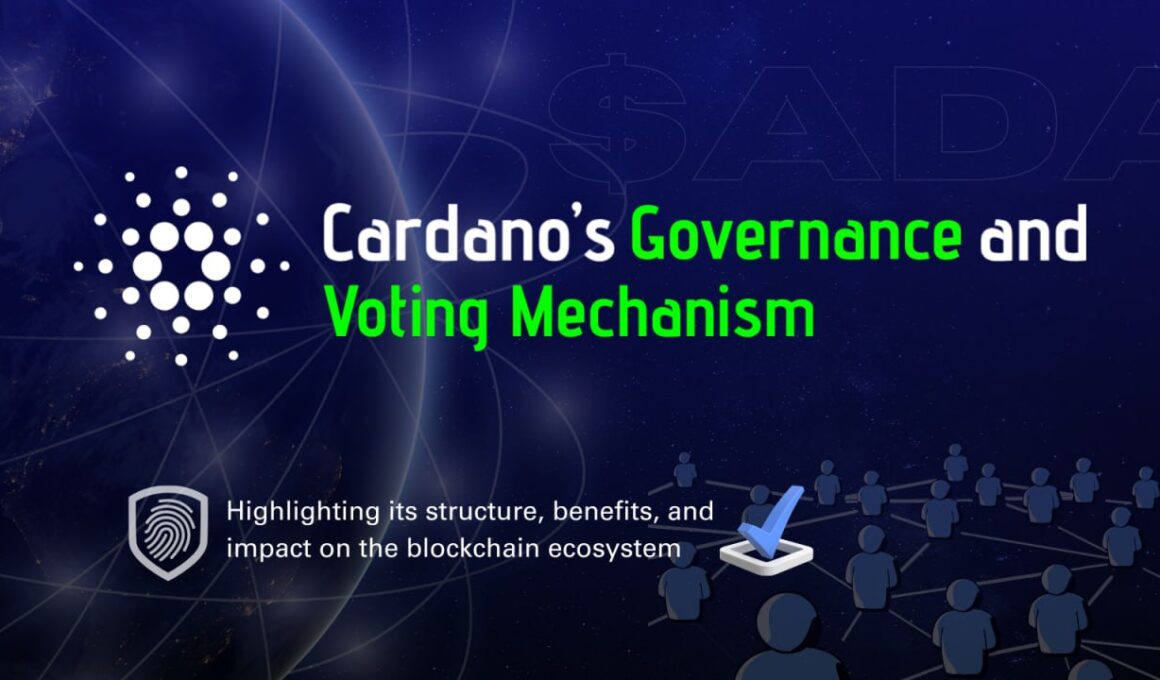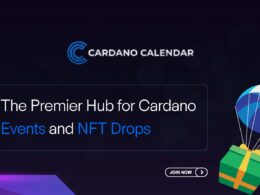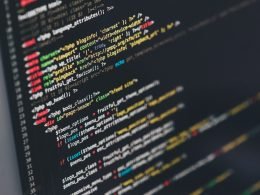Key Takeaways
Community-Driven Decision Making
Cardano’s governance is all about giving power to the people. ADA holders have a real say in how the ecosystem evolves, which means that the community directly influences important decisions and the future direction of Cardano. It’s not just a handful of developers calling the shots, everyone gets a voice.
Project Catalyst is a Game-Changer
One of the standout features of Cardano is Project Catalyst. It’s a platform where community members can propose projects and get funding based on votes from ADA holders. This not only encourages innovation but also ensures that the projects funded are those the community genuinely believes in and supports.
A Model for the Future
Unlike traditional systems where decisions are top-down, Cardano’s governance model is decentralized, transparent, and inclusive. This approach not only reduces the risk of corruption but also builds a stronger, more resilient network. It’s a forward-thinking model that other blockchain platforms could learn a lot from.
Blockchain Governance
Blockchain technology is celebrated for its promise of decentralization, offering a system where control is distributed among many rather than centralized in one authority. However, this promise hits significant roadblocks when it comes to making important decisions about updating the software that underpins these systems.
Imagine a town where the law is literally the written code, changing that law isn’t just a matter of consensus, but of altering the very foundation on which the town operates. This scenario is often fraught with controversy and frustration among the town’s citizens, leading to disruptions that can ripple through the entire community.
Take Bitcoin and Ethereum, for example. These leading cryptocurrencies have both faced situations where disagreements over changes led to “hard forks.” Essentially, a hard fork is like a major split where the blockchain divides into two separate paths. Think of it as a significant schism in a community, where two factions go their separate ways, each continuing to build their own version of the future.
These forks didn’t just split the developer teams and resources, they also created duplicate digital assets, which led to confusion among users and opened up opportunities for fraudsters to exploit the situation.
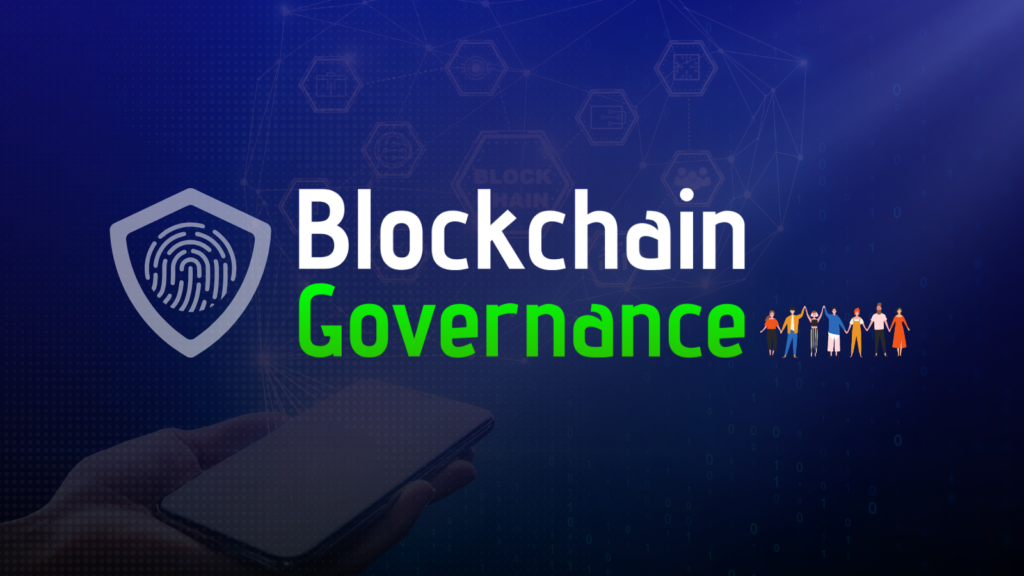
What is Governance?
Governance, in this context, refers to the processes and mechanisms that help these decentralized systems make decisions and evolve in a coherent direction. Unlike traditional fields such as political elections or corporate governance, where decision-making processes are well-studied and established, blockchain governance is still in its infancy.
There isn’t yet a universal playbook for how these systems should be governed. Instead, each blockchain platform tends to adopt its own approach, with varying levels of sophistication and integration. For instance, some blockchains might have a very formal process for proposing and voting on changes, involving detailed procedures and extensive community involvement. Others might have more ad-hoc or informal methods, where decisions are made by a small group of core developers or influential stakeholders.
This diversity in approaches makes the topic of blockchain governance both fascinating and complex. It’s a field ripe for in-depth exploration and systematization. Effective governance is crucial not just for making immediate decisions, but for ensuring the long-term sustainability and adaptability of the blockchain. It involves balancing the need for stability with the ability to innovate and evolve. Good governance mechanisms help prevent the kind of contentious splits that lead to hard forks, by providing clear, fair, and transparent processes for making decisions that everyone in the community can buy into.
So, why does this matter? Well, for blockchain technology to truly fulfill its potential, it needs to find ways to handle governance challenges smoothly. This means developing methods that are not only technically sound but also socially and economically viable. It’s about creating a system where every participant feels their voice can be heard and their interests are protected, while also ensuring that the system as a whole can continue to grow and adapt in a healthy way.
Cardano’s Governance Framework
Cardano’s governance framework is a shining example of decentralized decision-making in the blockchain world. By actively involving the community in voting and proposal processes, Cardano ensures that all stakeholders have a significant role in shaping the network’s future. This inclusive approach helps avoid the pitfalls of centralized control, such as corruption and slow adaptation to change.
Key components like Project Catalyst enable ADA holders to propose and fund innovative projects, ensuring that the community drives the platform’s growth and evolution. The framework’s transparency and structured processes highlight Cardano as a pioneer in blockchain governance, setting a standard for others to follow. This article delves into the intricacies of Cardano’s governance model, its voting mechanisms, and the broader impact on the blockchain ecosystem.
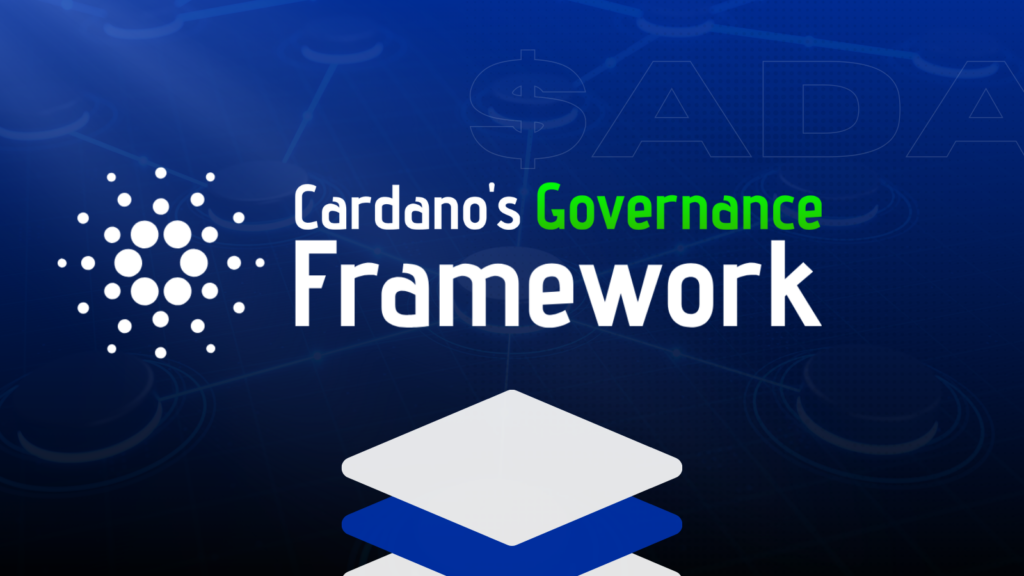
Principles of Decentralized Governance and The Role of Stakeholders in Governance
Decentralized governance is all about fairness, transparency, and inclusivity. Here are the key principles:
Transparency: Everything is out in the open. All decisions and their reasons are visible to everyone in the community. This builds trust and ensures everyone knows what’s going on.
Inclusivity: Everyone gets a say. Whether you’re a developer, an investor, or just hold ADA tokens, your voice matters. This ensures a wide range of perspectives are considered.
Accountability: Decision-makers are answerable to the community. This ensures actions are in the best interest of the network and its users.
Security: The processes are designed to be secure, protecting against anyone trying to manipulate decisions unfairly.
Stakeholders are the heart of Cardano’s governance. Here’s how they contribute
ADA Holders: If you hold ADA tokens, you can vote on proposals and help shape the future of the network. Your stake gives you a direct voice in decision-making.
Developers: Developers propose technical improvements and innovations, keeping the network up-to-date and robust. Their expertise is crucial for evaluating proposed changes.
Community Members: Active community members engage in discussions, propose ideas, and give feedback. Their involvement ensures that governance reflects the community’s needs.
Project Catalyst Participants: Through Project Catalyst, community members can propose and vote on new projects, directing funding to the most promising ideas. This keeps innovation flowing and resources well-utilized.
Cardano Improvement Proposals (CIPs)
Cardano Improvement Proposals, or CIPs, are like the community’s suggestion box for improving the Cardano blockchain. They allow anyone, from developers to ADA holders, to propose changes and enhancements. CIPs are detailed documents outlining potential changes or new features for Cardano. They cover everything from technical upgrades to governance policies, aiming to foster innovation and ensure beneficial changes.

How Do CIPs Work?
Proposal Submission: Anyone can submit a CIP, detailing the problem, solution, and potential impact.
Discussion and Review: The community reviews and discusses the proposal, offering feedback and suggestions.
Voting: ADA holders vote on whether to accept the proposal, ensuring decisions reflect the community’s will.
Implementation: Approved CIPs are integrated into the network by the development team
Why Are CIPs Important?
Cardano Improvement Proposals (CIPs) enable Cardano to evolve and adapt through community-driven changes, showcasing the collective wisdom of the community rather than top-down decisions. At the Cardano Summit 2023, the CIPs Award was presented to Adam Dean. He emerged as the most voted candidate by the Cardano Community, recognized for his significant impact on enhancing the Cardano ecosystem.
CIPs Latest Updates
Exciting news from the Cardano community. Lido Nation recently tweeted about 65 proposals requesting a total of ₳23.23 million. That’s a lot of innovative ideas coming our way. And on Saturday, June 22, 2024, Cardano Update shared another tweet highlighting some impressive activity: 248 commits were pushed across 27 repositories, with 6,920,079 lines of code added and 30,530 lines removed.
The Cardano ecosystem is definitely buzzing with development and improvements. Community involvement is critical in Project Catalyst. It ensures that funded projects align with the collective interests and needs of the Cardano community.
The Project Catalyst

Project Catalyst is a revolutionary initiative within the Cardano ecosystem. It aims to democratize innovation by allowing the community to propose and vote on funding for various projects. Project Catalyst operates through funding rounds where proposals are submitted, evaluated, and voted on. Successful proposals receive funding to develop their projects.
Community involvement is critical in Project Catalyst. It ensures that funded projects align with the collective interests and needs of the Cardano community.
Cardano’s Voting Mechanism
If you’re an ADA holder on the Cardano network, getting involved in the decision-making process is super straightforward. First, you’ll need to register to vote using one of the supported Cardano wallets. Once you’re all set up, you can dive into the Project Catalyst voting app to check out the proposals up for consideration.
What’s great about this system is that your vote is completely anonymous. Plus, the weight of your vote depends on how much ADA you hold, giving you more influence if you have a larger stake. When it comes time to cast your vote, you’ll base your decision on the quality of the proposals. But you won’t be doing this in a vacuum, there’s a community review stage where everyone shares their feedback, and you can see what others think before making your choice.
So, not only do you get to have a say in the future of Cardano, but you also get to be part of a vibrant community of like-minded individuals who are passionate about the platform’s development. It’s a great way to ensure that the best ideas rise to the top and get the support they need to succeed.
How Voting Works?
Cardano’s voting mechanism is built on blockchain technology, ensuring secure and transparent voting processes.
- ADA holders can cast their votes on various proposals using dedicated voting platforms.
- To participate in voting, stakeholders must hold ADA tokens.
- The amount of ADA held can influence the voting power, encouraging more significant participation and investment in the network.
- Voting incentives are provided to encourage participation. These incentives may include rewards in ADA tokens or recognition within the community.
Governance Layers
Protocol-level governance involves making decisions about the underlying technology and consensus mechanisms. This layer ensures the network’s technical robustness and security. The treasury system in Cardano funds community proposals and projects. It collects a portion of transaction fees, which are then allocated to approved projects through a voting process.
The treasury system in Cardano funds community proposals and projects. It collects a portion of transaction fees, which are then allocated to approved projects through a voting process. Advantages of Cardano’s model include reduced risk of corruption, enhanced community trust, and the ability to rapidly adapt to changes through collective decision-making.
Security and Transparency
Ensuring voting integrity is paramount. Cardano employs cryptographic techniques to secure votes and prevent manipulation. Transparency measures, such as public vote counting and proposal tracking, ensure that all governance activities are visible to the community.
Ouroboros, Cardano’s consensus protocol, plays a vital role in governance. It ensures that the network remains secure while allowing for decentralized decision-making. The Proof-of-Stake (PoS) mechanism underpins Cardano’s consensus protocol. It enables secure, efficient, and decentralized governance.
Governance Challenges and Solutions
Governance challenges include managing diverse stakeholder interests, ensuring participation, and maintaining transparency. Mitigation strategies involve continuous community engagement, improving voting platforms, and enhancing transparency measures.
Upcoming changes in Cardano’s governance include enhancements to the voting process, improved security measures, and increased community participation. The long-term vision for Cardano’s governance is to create a fully decentralized and self-sustaining ecosystem that adapts to the evolving needs of its stakeholders
The Successful Proposals

Collectively, Cardano ecosystem have seen incredible success with the Catalyst proposals, with over 1,500 projects funded so far. It’s amazing to see how much the community has achieved together. If you’re curious, you can check out all the Completed Proposals from different funding rounds. Each one is a testament to Cardano’s shared vision and commitment to creating a better, decentralized future.
FAQs
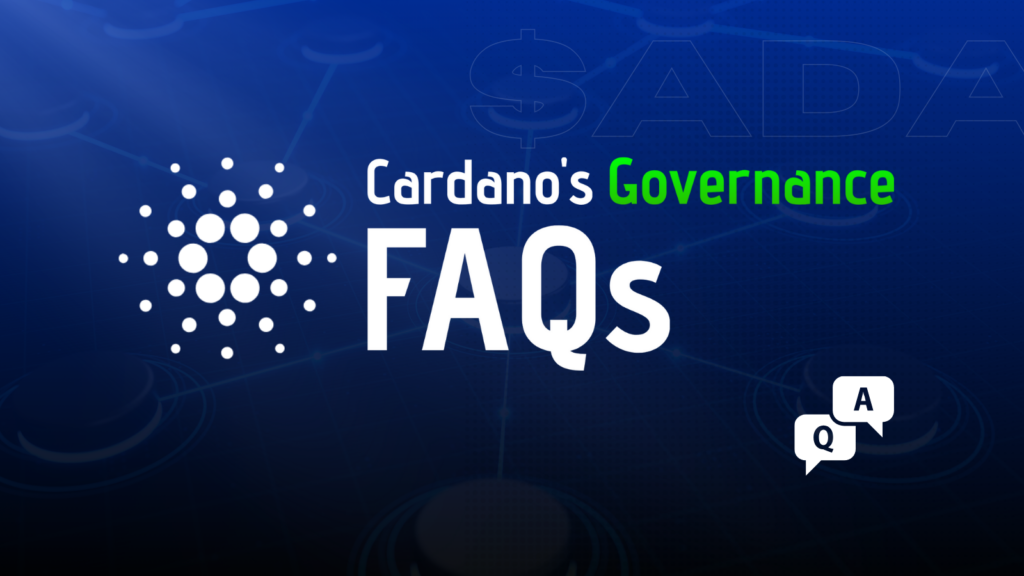
What is Cardano’s governance model?
Cardano’s governance model is a decentralized system that allows stakeholders to participate in decision-making processes through voting and proposals.
How does Project Catalyst work?
Project Catalyst is an initiative that enables the Cardano community to propose, vote on, and fund projects aimed at enhancing the ecosystem.
What are Cardano Improvement Proposals (CIPs)?
CIPs are proposals submitted by stakeholders to suggest improvements to the Cardano network, which are then discussed and voted on by the community.
How can I participate in Cardano’s governance?
To participate, you need to hold ADA tokens. You can then vote on proposals and submit your own through designated platforms.
What are the benefits of Cardano’s governance model?
Benefits include increased transparency, community trust, and the ability to adapt quickly to changes through collective decision-making.
What challenges does Cardano’s governance face?
Challenges include managing diverse stakeholder interests, ensuring participation, and maintaining transparency.
Summary
Bringing this to a conclusion, Cardano’s governance and voting mechanisms represent a significant advancement in the blockchain world. By involving the community in decision-making, Cardano ensures a transparent, inclusive, and adaptive network. As the ecosystem continues to grow and evolve, its governance model will play a crucial role in shaping the future of blockchain technology.






